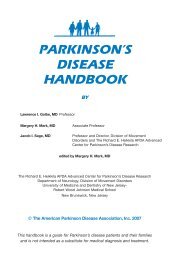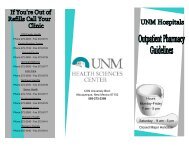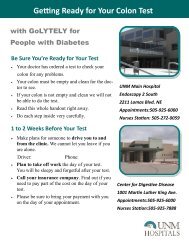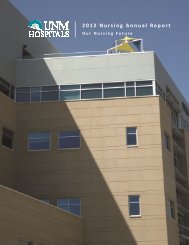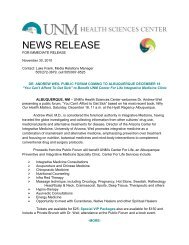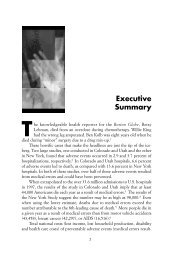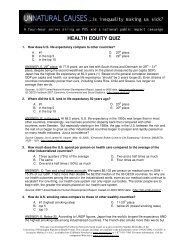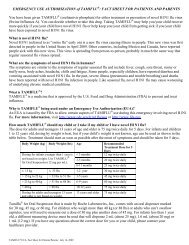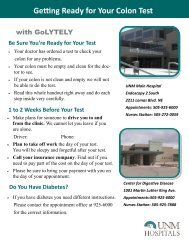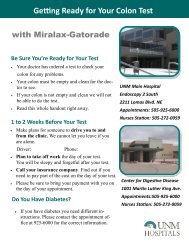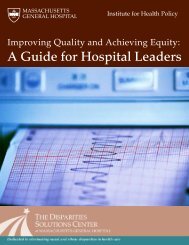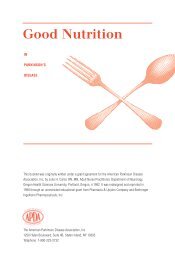2011 Nursing Annual Report - UNM Hospitals - University of New ...
2011 Nursing Annual Report - UNM Hospitals - University of New ...
2011 Nursing Annual Report - UNM Hospitals - University of New ...
Create successful ePaper yourself
Turn your PDF publications into a flip-book with our unique Google optimized e-Paper software.
ANNUAL NURSING REPORT <strong>2011</strong> — QUALITY<br />
Quality<br />
What is National Database <strong>of</strong> <strong>Nursing</strong> Quality<br />
Indicators (NDNQI) and How Does it Relate to the Magnet Recognition Program<br />
Magnet requires data from many different areas within an institution;<br />
however they do not specify which database a facility must use to<br />
report this data. Some requirements exist for benchmarking — that is<br />
why so many hospitals choose to join NDNQI. What is unique about<br />
NDNQI is that they are the only national database that collects nursing<br />
data at the unit level. This allows hospitals not only to compare themselves to other hospitals in regard to<br />
nursing quality indicators, but also to other ‘like’ units in the nation participating in database.<br />
Participating in NDNQI is completely voluntary and provides a hospital with an opportunity to be part <strong>of</strong> a<br />
nursing database that specifically aims to help nurses refine their care and processes within their practice.<br />
<strong>New</strong> facilities join regularly so this is a very dynamic database that allows nurses to closely monitor how<br />
their nursing care compares to other facilities. This, in turn, provides multiple opportunities for better<br />
quality and improved patient outcomes. What are the NDNQI Indicators Patient Falls; Patient Falls with<br />
Injury; Pressure Ulcers: community-acquired, hospital-acquired, unit-acquired; Skill Mix; <strong>Nursing</strong> Hours<br />
per Patient Day; RN Surveys: Job Satisfaction — Practice Environment; RN Education and Certification;<br />
Pediatric Pain Assessment Cycle; Pediatric IV Infiltration Rate; Psychiatric Patient Assault Rate; Restraints<br />
Prevalence; Nurse Turnover; and Healthcare-associated Infections:<br />
VAP — ventilator-associated pneumonia; CLABSI — central line–associated blood stream infection; and<br />
CAUTI — catheter-associated urinary tract infection. <br />
What’s <strong>New</strong> in the ED for <strong>2011</strong><br />
The Emergency Department is hard at it with some <strong>of</strong> the best AMI<br />
Core Measures in the country. Pneumonia Core Measures are at 94%<br />
and the staff members are currently working toward a Chest Pain<br />
Center Accreditation.<br />
The ED also <strong>of</strong>fers monthly review courses for the CEN exam, and<br />
constantly looks at new ways to improve communication including a<br />
system called “Vocera Communication,” a hands-free ‘voice command’ communication wireless system.<br />
<strong>2011</strong> also ushered in a brand-new onsite adult urgent care center that is staffed by NPs and PAs.<br />
12<br />
Way to go <strong>UNM</strong>H ED!



